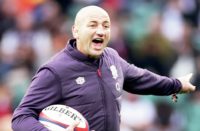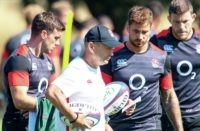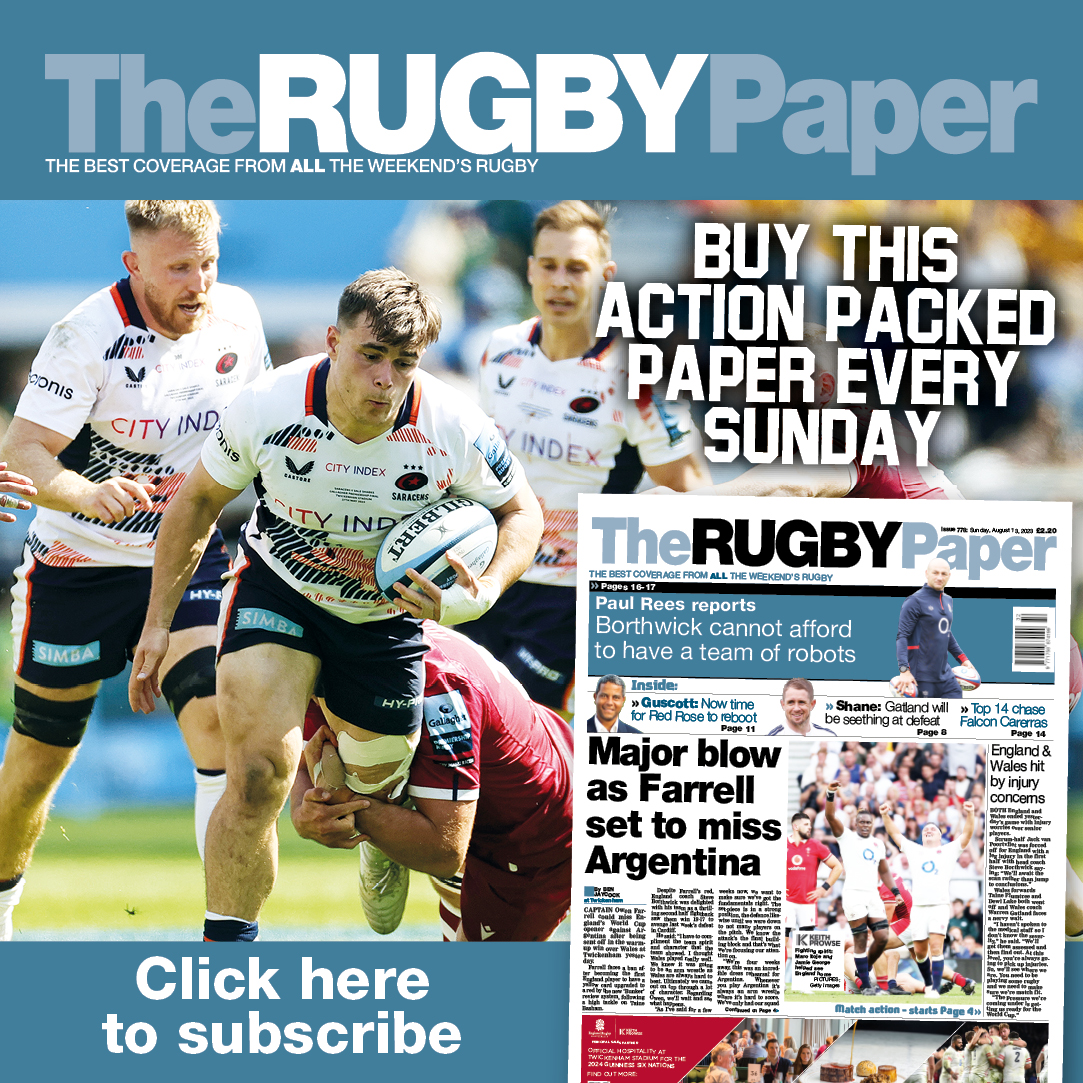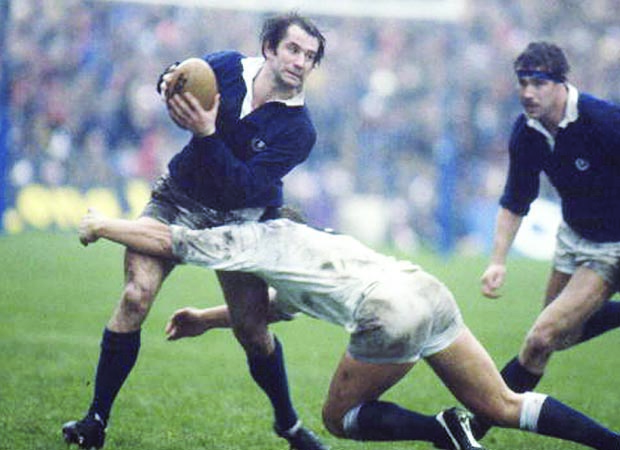 It’s always intrigued me, that six digit figure of 104,000 from a Five Nations match 40 years ago. What was that all about? How and why did well over 20,000 more fans than the official capacity of Murrayfield at the time cram into the home of Scottish rugby for their Five Nations match against Wales? The Scots weren’t even playing for a Grand Slam, indeed, they had lost in Paris two weeks earlier, while Wales had won only one match the previous season.
It’s always intrigued me, that six digit figure of 104,000 from a Five Nations match 40 years ago. What was that all about? How and why did well over 20,000 more fans than the official capacity of Murrayfield at the time cram into the home of Scottish rugby for their Five Nations match against Wales? The Scots weren’t even playing for a Grand Slam, indeed, they had lost in Paris two weeks earlier, while Wales had won only one match the previous season.
Even in this ‘bigger, better, boom’ modern-day world that 104,000 remains the biggest crowd in European rugby history by a distance and officially ranks only behind two monster crowds at Sydney‘s Olympic Stadium for Bledisloe Cup games when, just for a year leading into the 2000 Olympics, it boasted a temporary capacity of 110,000.
If you wanted to be pedantic that Murrayfield crowd is still the biggest ever gathering at a dedicated rugby stadium and bear in mind also that thousands were locked out as SRU officials suddenly realised that there was just no more room at the inn.
Fans, many holding legitimate tickets, hurriedly headed to the nearest bar to watch the game on TV or flocked to the BBC outside broadcast vans on the back pitches where some loudspeakers were hurriedly rigged up to relay Bill McLaren’s TV commentary. The crowd figure could have been even more!
Looking back 40 years on you can see that British and Irish rugby, off the back of thrilling Lions successes in 1971 and 1974, was riding a perfect wave of popularity in the mid-Seventies and retrospectively we need to admit also that Max Boyce played a massive part in generating that crowd, more of which anon.
Wales were undoubtedly the “marquee” box office team of the Seventies but they weren’t perhaps quite as invincible as we recall and the prospect of beating them tended to heighten expectations rather than dampen them. The rivalries were fierce and the other four nations not that far behind.
Ireland could have won the 1972 tournament had Wales and Scotland not cried off their games in Dublin during the ‘Troubles’ while Ireland had won the title fair and square in 1974 when, in fact, Wales, despite their star-studded team, had been distinctly lacklustre. Saving themselves for the Lions trip said their supporters!
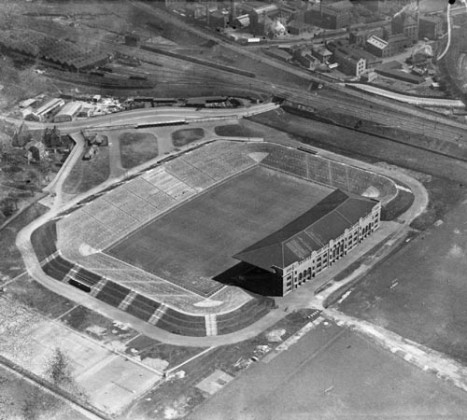
Scotland’s matches against the Welsh were invariably crackers, especially at Murrayfield. A famous John Taylor touchline conversion after a last-ditch try from Gerald Davies saw Wales win 19-18 with the final kick of the game in 1971 but Scotland had prevailed 10-9 two years later. In the 1975 ‘104,000 game’ Scotland squeezed home 12-10 while in 1977 Phil Bennett scored one of the truly great Championship tries to seal Wales’ 18-9 win. For a while this was THE match of the Championship.
And for all the charms of Paris, Dublin and the mad dash to Twickenham every two years, the Scotland trip became the Holy Grail of rugby tourism and that is where Max Boyce comes in. Down in the valleys the balladeer from Glynneath had been licking his wounds after being knocked out of Opportunity Knocks at the end of 1973 but EMI liked the cut of his gib and offered him a two-album contract, the first of which was a live recording of a concert at Treorchy Rugby Club.
Boyce had become the unofficial voice of the Welsh fans during of the glory years – the poet and choirmaster who stayed sober enough to commit it all to memory – and suddenly it was his moment in the sun. In 1974 Live In Treorchy spent 38 weeks in the album charts selling over 500,000 copies. His Hymns And Arias must be considered the signature tune but at the time the most popular was probably The Scottish Trip – I can still remember snatches:
Oh we loaded the bus up with flaggons and left at twenty past seven; We stopped 14 times between Neath and Bridgend, we were still in Glamorgan at 11;
On the M5 Will spoke to the driver, he said can you no stop this bus for a while; He said man alive we’re on the M5, you’ll have to hang on to Carlisle;
Old Will, he climbed out on the sunroof, and he stood on the bus in disgrace; But he wasn’t to know the bridge was so low, but he died with a smile on his face.
I can only say we didn’t get out much in the Seventies and it seemed cracking at the time – usually after ten pints of ale. In all seriousness it’s easy to underestimate Boyce. His second album, We All Had Doctors’ Papers, which was recorded live at Pontarddulais RFC came out after the 1975 season in question and to this day the only comedy album ever to reach to reach No.1 in the UK album charts. Eat your heart out Billy Connolly, Pete and Dud, Tommy Cooper, the Two Ronnies, Jasper Carrot et al.
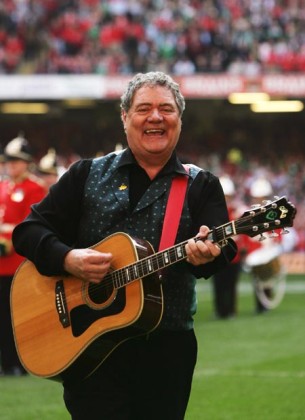
Anyway with Boyce painting such an ‘irresistible’ picture of the Scottish trip, the Welsh supporters signed up in their droves for the 1975 invasion of Edinburgh and surrounding parts and, after winning in Paris and beating England in Cardiff in their opening two games, the uptake grew. Good times were just around the corner. Again.
By the time of the match an estimated 45,000 Welsh fans had headed north of the border and here’s the rub. This was the last international in Scotland’s history where you could also buy tickets at the gate on the day.
Nobody – at the SRU or within the game – had anticipated the tide of humanity that flooded into Scotland and, come the day, many of the Welsh arrived early, paid their money at the gate and were singing in unison on the massive terraces two hours before kick-off. In the meantime some of those who arrived late – Scottish and Welsh – with pre-purchased tickets had to be turned back. The term cock-up comes to mind.
The tale of the turnstile tells us that 104,000 fans were in the ground although I notice that that year’s Rothmans Annual cleverly talks in code to avoid embarrassment or censure and further investigation. Rothmans mentions a world record capacity 80,000 crowd and 80,000 was indeed the official capacity at Murrayfield in 1975 – but everybody in the game knew the world record was the 95,000 at Ellis Park to watch the Boks play the Lions in 1955.
Bear in mind this is just five years after the Ibrox Disaster when 66 fans died in a crush at Rangers’ New Year’s Day game against Celtic and I suspect there would have been all hell to pay in terms of ground safety issues if the true Murrayfield figure had been revealed immediately. It was quite obvious even from watching the TV and listening to an incredulous Bill McLaren’s commentary that the ground was absolutely rammed way beyond the norm.
Scotland’s David Leslie, playing flanker that day, recalls the day vividly: “You could tell something a bit mad was going on just driving to the ground and getting off the bus, I’d never seen crowds like it, a sea of humanity and just so many Welsh.
“My wife told me that after the game, as she made her way down from the stand, she was swept off her feet by the crowd at the top of the steps and she didn’t touch down again until she had reached the bottom. We laughed for a few seconds but then it dawned on us how serious it could have been.
“I can imagine it was also a scary moment. The decision to make future matches all-ticket was made first thing Monday morning if I recall.
“The crowd was packed in way before the game started. We had just started to do warm-ups on the pitch in those days and when we jogged on an hour and half before the match it already looked like a full-house which was never the case normally as people made their way late from the pubs and car parks. ‘What the bloody hell is going on here’, was my instinctive reaction.
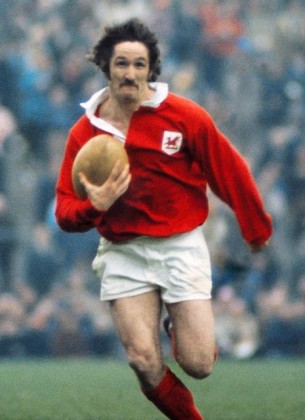
“It was a bit unsettling to be honest. ‘Are we missing something here, this is off the scale’, I kept asking myself but the mind is a great thing and come kick-off all you are doing is thinking about the game and beating the Welsh. Remarkably you can actually put a 104,000 crowd into the back of your mind. It was a good win against a great Welsh team and a hell of a good night as well let me assure you.”
Gerald Davies also remembers the day very well: “It was extraordinary, they were in full voice singing up in the packed terraces 90 minutes before kick-off. I used to love Murrayfield. It had a perfect playing surface in those days and those big open terraces gave you a feeling of space out on the wing.
“I’m sure the actual dimensions of the pitch were absolutely standard – the same as the Arms Park or Twickenham or whatever – but I always felt like there was more room to work in. That day of the record crowd was amazing because out on the wing I felt that sense of space plus the extra energy of the crowd.
“Right at the end I had a bit of a dart and managed to get a pass away to Trevor Evans who scored to make it 12-10 to Scotland. We needed the conversion from wide out to earn the draw but Steve Fenwick was off the field injured so our big lock Allan Martin stepped forward. Allan was a really good kicker. He was one of the last classic old style toe-end kickers like Bob Hiller. He swung his long leg like a pro golfer lazily hitting a pitching wedge and I was pretty confident he would pop it over if I’m honest. But it wasn’t to be.
“I’ve spoken to many fans and friends about that day over the years. It sounds like those on the ‘killer train’ from Milford Haven had the most fun. It was a special day-charter which started way out west at some ridiculous hour in the middle of the night and picked up at various stations in Wales before heading straight to Edinburgh to get there about midday.
“Then after the match it headed home again about 6pm out of Waverley Station. It sounds like an epic, it would have made a TV special. They did Grand Slam with Windsor Davies with Wales going to Paris but I fancy The Trip, the behind the scenes story of a day’s charter to Edinburgh and back in 1975 would have topped the ratings.”
*This article was first published in The Rugby Paper on February 8.


